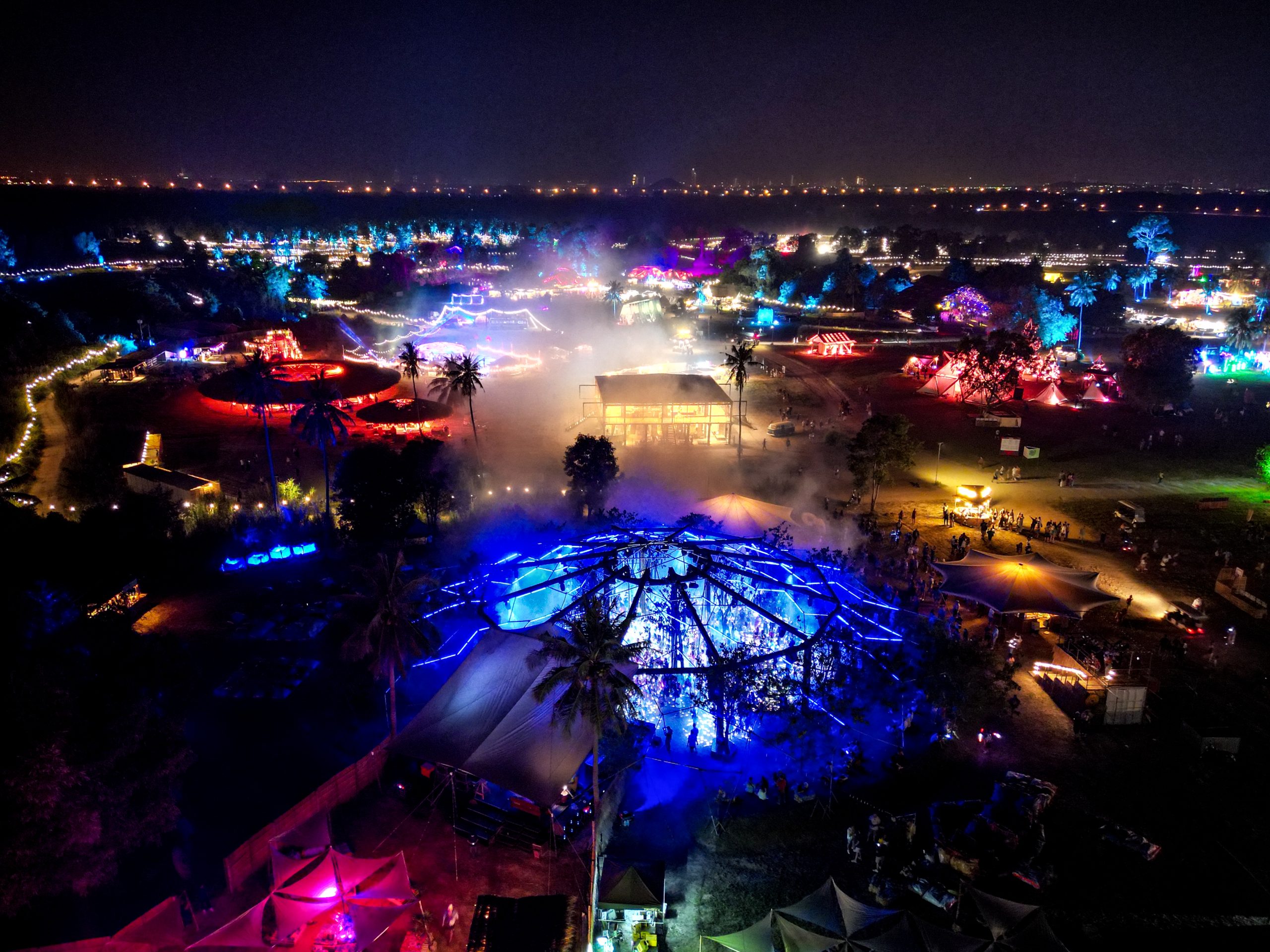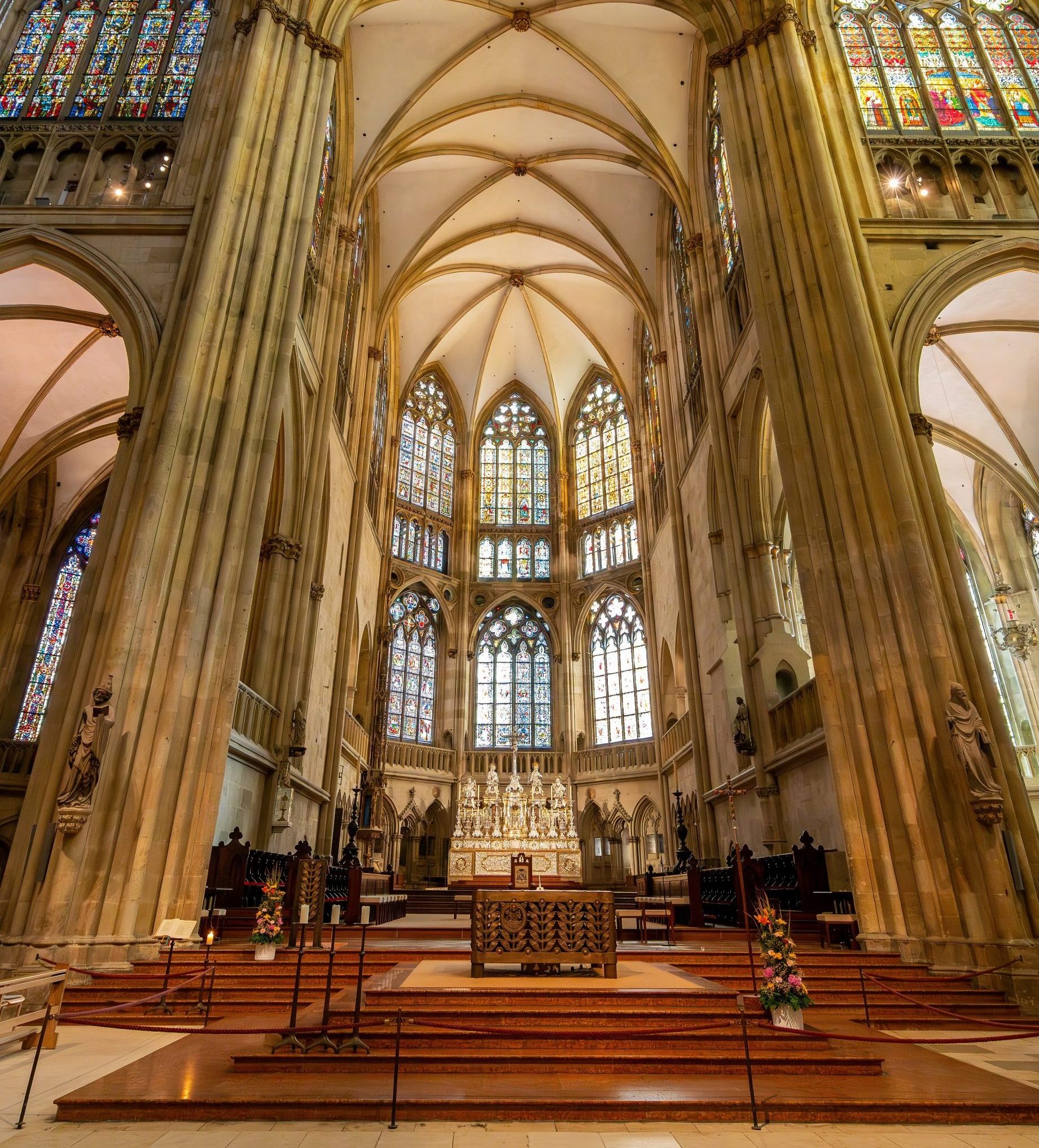Article
Music Festivals: A Shared Live Sound Experience

Music festivals are more than just fantastic live sound performances. They create a sense of connection among individuals passionate about live music and foster a sense of belonging. These festivals and the communities they’ve built have become integral to the arts and cultural landscape. Each festival has an identity based on the city or region it’s in, the distinct genres or collections of genres it showcases, and the festival goers it attracts. These festival goers, united by their shared affinity for music, form an instant sense of community and comradery. A chronology of some of the most well-known festivals reveals a diverse range of genres, the impact of location, and their increasing cultural significance.
The First Music Festival: The Pythian Games (582 BC)
The origins of music festivals date back to ancient Greece. The first recorded music festival was held in 582 BC to commemorate the destruction of Python and the arrival of the Oracle of Delphi. The Pythian Games featured a variety of musical and competitive events. These events included hymns addressed to Apollo, the Greek god of arts and music. The ancient Greeks had a fondness for wind and string instruments and a version of many that were popular then are still in use today.
Monterey Pop Festival (1967)
Held in Monterey, California in 1967, the Monterey Pop Festival was born out of the spirit of the vibrant music scene of the decade and was one of the first major rock festivals. Co-created by John Phillips of The Mamas & the Papas, the festival became a landmark in the history of rock music. The music was rebellious and a catalyst to the sounds of counterculture that featured dominantly in the music scene of the late 1960s. The festival featured legendary performances by Janis Joplin, Otis Redding, Jimi Hendrix, and Simon and Garfunkel, among others.
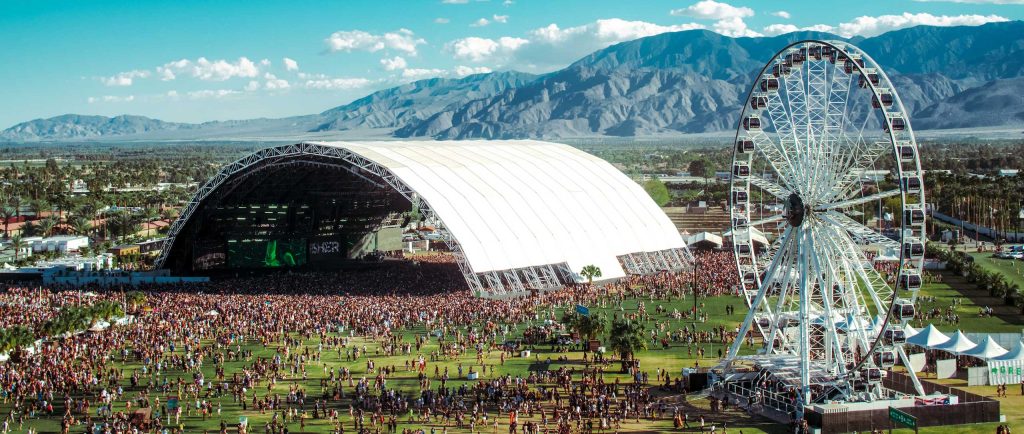
Woodstock (1969)
Woodstock, held in 1969 in Bethel, New York, is celebrated as the pioneering music festival that established the blueprint for all that followed. The vision of promoters Michael Lang, John Roberts, Joel Rosenman, and Artie Kornfeld was to create a grand gathering that fostered harmony and creativity. It was a pivotal moment for the counterculture movement, bringing together approximately 400,000 people to celebrate peace, love, and music. Iconic performances by Jefferson Airplane, Janis Joplin, Jimi Hendrix, Joan Baez, and The Who left an indelible mark, establishing music festivals as a primary artistic means for cultural and social expression. The ground-breaking number of performers and attendees and the peaceful atmosphere amidst logistical challenges underscored the powerful communal spirit and the era’s longing for a more inclusive and empathetic society. Woodstock remains an iconic cultural milestone in music history.
Glastonbury (1970)
In 1970, dairy farmer Michael Eavis and his wife Jean, inspired by the free festival movement and spirit of Woodstock, founded Glastonbury in the misty English countryside town of Pilton, Somerset. It quickly grew from a small gathering of 1,500 attendees into a massive celebration of nearly 200,000 people. Glastonbury is renowned for its diverse musical lineup and unpredictable weather conditions, having hosted performances by legendary artists including David Bowie, Led Zeppelin, Paul McCartney, and Radiohead. While, Glastonbury often coincides with the UK’s rainy season, this doesn’t dampen the excitement as people from all walks of life gather together to celebrate.
Lollapalooza (1991)
Founded by Perry Farrell of Jane’s Addiction as a farewell tour for his band. Lollapalooza aimed to showcase the band’s favorite music while promoting cultural unity and artistic expression. Today, it’s a global phenomenon with annual events in cities like Chicago, Berlin, and São Paulo. Its lineup of alternative rock, hip-hop, and electronic music is an immersive sound festival that’s featured artists such as The Foo Fighters, The Strokes, Pearl Jam, Miley Cyrus, Chappell Roan, and Doechii.
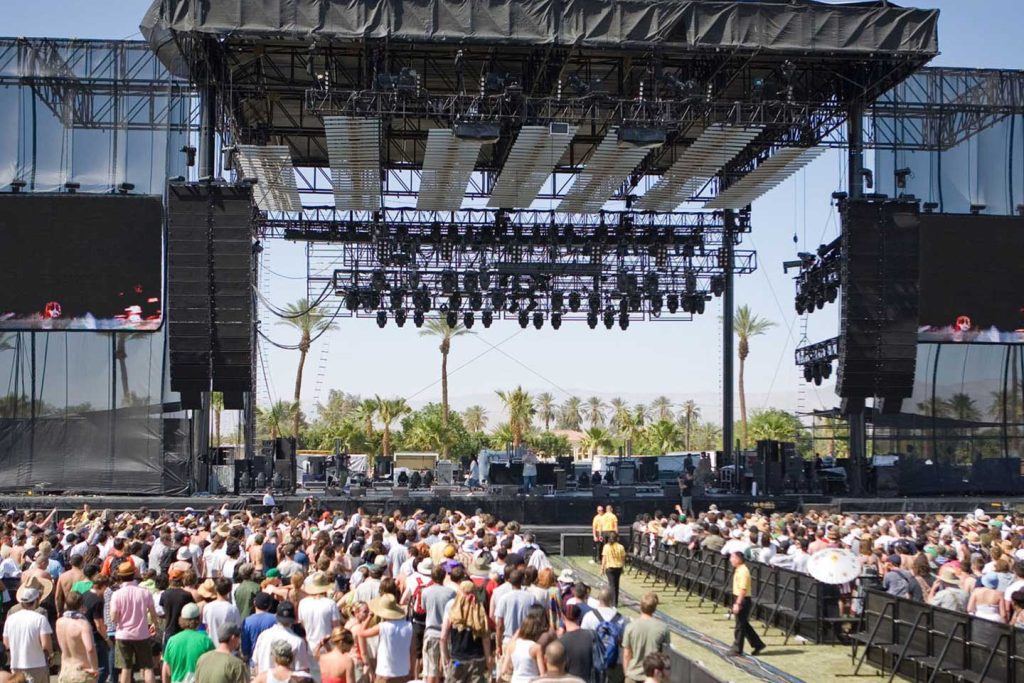
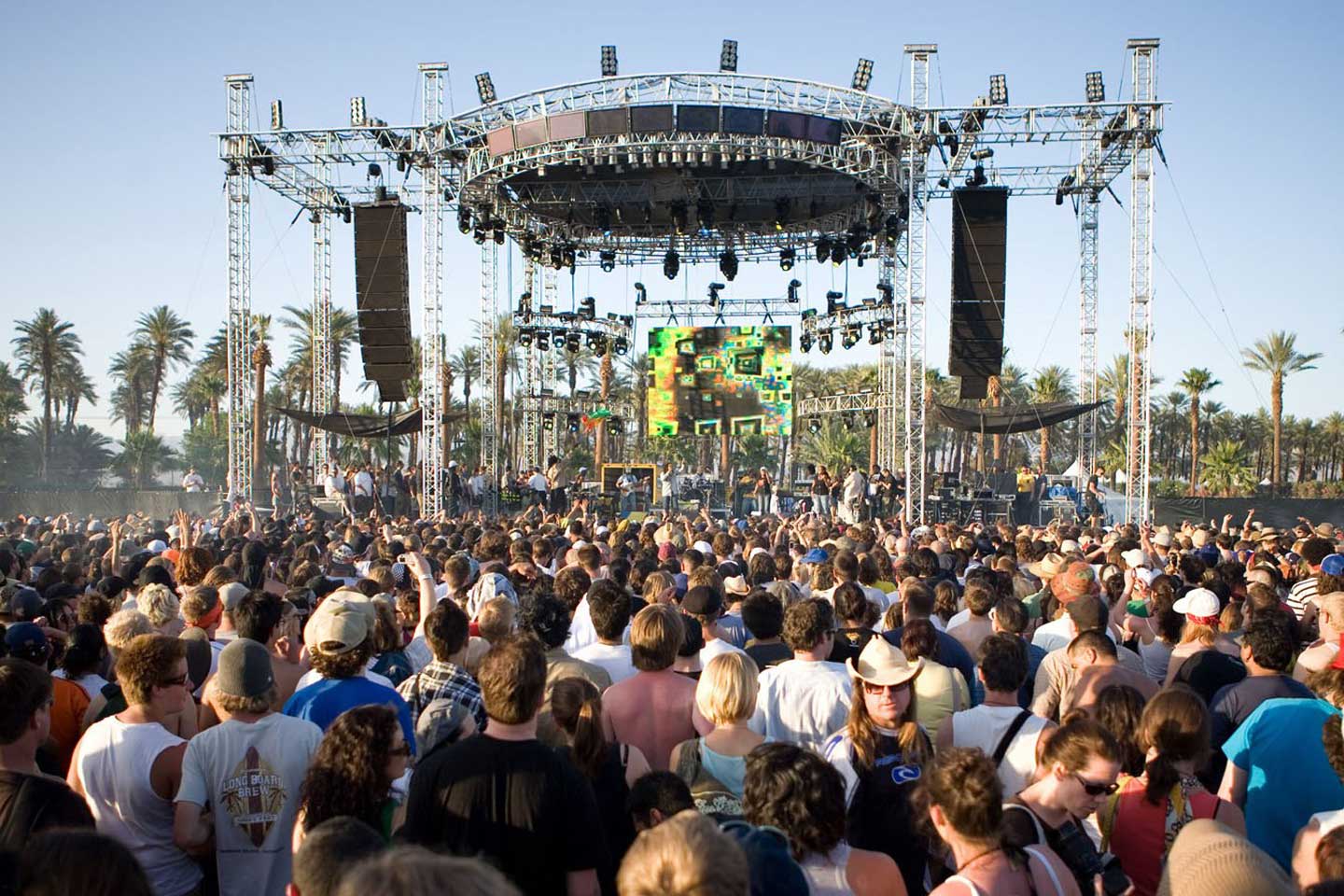
Coachella (1999)
Every spring, the Coachella Valley transforms into a vibrant playground for music lovers and trendsetters. Founded by Goldenvoice’s Paul Tollett in 1999, the Californian desert fest has expanded its lineup to include an array of genres, attracting people from around the world. Since 2012, the festival has taken place over two weekends in April with nearly 125,000 people in attendance each day. Dave Rat, the founder of Rat Sound which has served as sound system provider for Coachella since its founding, says, “Coachella music and arts festival is an interactive experience focused on creating indelible memories by saturating the senses with music and visual intensities and most importantly a vast landscape of human connection and community. From the sound system perspective, our goals are to design clean, clear powerful audio for each stage to sound amazing and unique. Just as each stage is a different visual experience with a completely different set of artists, set designs and venue, each stage is also a different sonic experience as well.” Featured artists have included music sensations Lady Gaga, Lana Del Rey, Harry Styles, Ariana Grande, Eminem, and Beyoncé. The Coachella Valley Music and Arts Festival has also gained significant attention for its impressive art installations. These installations, which have grown in concept, scale, and budget, are created and curated to enhance the festival’s music acts, atmosphere, and serve as the perfect backdrop for celebrities and influencers sharing photos of the festival on their Instagram feeds.
Bonnaroo (2002)
The ambiance at Bonnaroo exudes southern hospitality, being located in Manchester, Tennessee, with festival goers numbering up to 100,000 annually. Bonnaroo quickly gained recognition for its rock, hip-hop, jazz, and Americana vibe to create a positive community environment and promote sustainable practices. Environmental sustainability extends to even the live sound system, which like many festivals, is provided by L-Acoustics. The lineup of renowned artists has included Paul McCartney, Pearl Jam, Phish, Kendrick Lamar, and the Beastie Boys. This year’s festival will include The Infinity Stage from partner Polygon Live. This will be an open-air space with three domes forming the world’s largest 360-degree spatial immersive audio experience. According to Polygon Co-founder, Nico Elliott, “This is Polygon’s largest deployment of spatial audio so far. We’ve always wanted to deploy multiple domes and allow more of the audience to be fully immersed in the music. It is a dream that it has come together at Bonnaroo. We are excited for the Bonnaroo audience to experience this deployment of the Polygon, where the music is the lead, the lighting is the support, and screens are left behind. We believe this type of stage allows the audience to connect more meaningfully with each other and the music.”
Tomorrowland (2005)
Tomorrowland, an annual electronic dance music festival held in Boom, Antwerp, Belgium, has become one of the world’s most popular music festivals. Renowned for its extravagant stages and dazzling pyrotechnic displays, Tomorrowland quickly gained fame and a large fan base. It stands as one of the world’s largest and most iconic electronic dance music (EDM) festivals, attracting nearly half a million attendees from across the globe who come to immerse themselves in its enchanting atmosphere. It also draws the world’s most renowned artists of the genre including Armin van Buuren, Martin Garrix, David Guetta, Steve Aoki, Hardwell, and Swedish House Mafia.

Stagecoach (2007)
Stagecoach Festival, an annual country music extravaganza, takes place at the Empire Polo Club in Indio, California, within Coachella Valley. Organized by Goldenvoice, Stagecoach is a sister event to the renowned Coachella festival and is held the weekend after Coachella. As festivals like Stagecoach have rapidly grown in popularity, consumer brands are eager to have a presence. Selected brands are carefully curated into the experience to align with a festival’s own brand identity. Andrew Klein, President of Global Partnerships at AEG Presents says that at Stagecoach, “Most of our brand partners authentically integrate and make the fan experience better. This is a win-win for the brands and the fans. Budweiser has their own music stage at the event and bring the Budweiser Clydesdales to the festival which is a crowd favorite. Toyota not only teaches the fans how to line-dance, but they are also streaming performances from their brand activation area. Neutrogena offers fans free sunblock which is always appreciated in the desert sun. At AEG Presents, we are not creating ‘off the shelf programs’, but rather each deal is hand-crafted with our partners to maximize impact.” Stagecoach has featured a lineup of country music stars like Garth Brooks, Miranda Lambert, Luke Bryan, and Keith Urban, as well as folk, bluegrass, roots rock, Americana, and alternative country artists. The festival aims to honor veteran performers while showcasing emerging talent. Stagecoach holds the notable distinction of being the world’s largest and most lucrative country music festival.
Connecting Humans Through Shared Live Sound Experiences
While all these festivals have a unique identity, from the genre of music they feature, to the culture of the cities that host them, to the crowds they attract, they have one thing in common – people gather to connect in the shared music experience. Music festivals are a vibrant fusion of artistry, branding, and community building. The large crowds from diverse backgrounds that flock to these festivals are united by a shared passion for the festival’s musical flavor. In this way, music festivals possess a remarkable ability to bring people together and unite them through the shared experience of live sound performances. Festivals have not only endured but have significantly expanded in scope because they fulfill the core human need for belonging, to be part of something very special in a moment in time that leaves an indelible mark and provides lasting memories.
More from L-Acoustics
Technologies, solutions, news, and stories related to this article.
